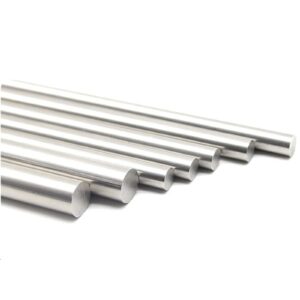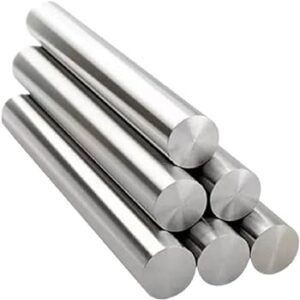Introduction
Stainless steel is a versatile and widely used material in various industries, known for its corrosion resistance and durability. Among the many types of stainless steel available, the 316 stainless steel round bar is particularly renowned for its exceptional properties. In this comprehensive guide, we will delve into the various characteristics and applications of 316 stainless steel round bars. From its chemical composition to its mechanical properties, this article aims to provide an in-depth understanding of this remarkable material.
- Introduction
- Chemical Composition
- Mechanical Properties
- Corrosion Resistance
- Heat Resistance
- Applications
- FAQ
Chemical Composition
316 stainless steel is classified as an austenitic stainless steel. Its chemical composition plays a significant role in determining its properties. The key elements in the composition of 316 stainless steel are:
- Chromium (Cr): Chromium content in 316 stainless steel is approximately 16-18%. Chromium enhances the steel’s corrosion resistance by forming a passive oxide layer on its surface.
- Nickel (Ni): With a nickel content of 10-14%, 316 stainless steel exhibits excellent toughness and ductility. Nickel also contributes to its resistance to corrosion and oxidation.
- Molybdenum (Mo): Molybdenum, at about 2-3%, provides enhanced resistance to pitting and crevice corrosion, making 316 stainless steel suitable for harsh environments.
- Iron (Fe): Iron is the base element of stainless steel, making up the majority of its composition.
- Other Trace Elements: Small amounts of elements like carbon, silicon, and manganese are also present, fine-tuning the steel’s properties.
Mechanical Properties
Tensile Strength
One of the critical mechanical properties of 316 stainless steel is its impressive tensile strength. It typically ranges from 515 to 620 MPa, making it suitable for applications where high strength is required.
Yield Strength
The yield strength of 316 stainless steel is approximately 205 MPa, indicating its ability to withstand substantial stress without permanent deformation.
Elongation
316 stainless steel offers good elongation, with values typically exceeding 40%. This means it can deform significantly before breaking, making it ideal for forming and machining processes.
Hardness
The hardness of 316 stainless steel, as measured on the Rockwell scale, is around 95 HRB (Rockwell B hardness) when annealed. It can be further hardened through cold working.
Corrosion Resistance
Perhaps the most outstanding feature of 316 stainless steel is its exceptional corrosion resistance. It is highly resistant to a wide range of corrosive environments, including:
- Aqueous Solutions: 316 stainless steel is resistant to corrosion in various aqueous solutions, including those containing chloride ions, which can be particularly corrosive to metals.
- Acids and Bases: It can withstand exposure to many acids and bases, including sulfuric acid and hydrochloric acid.
- Marine Environments: Due to its resistance to chloride corrosion, 316 stainless steel is commonly used in marine applications.
- High-Temperature Environments: It maintains its corrosion resistance at elevated temperatures, making it suitable for high-temperature applications.
Heat Resistance
316 stainless steel also exhibits good heat resistance. It can withstand high temperatures without significant loss of mechanical properties. This makes it suitable for applications involving exposure to heat, such as industrial ovens and exhaust systems.
Applications
316 stainless steel round bars find extensive use in various industries, thanks to their remarkable properties. Some common applications include:
- Marine Industry: Due to its corrosion resistance, 316 stainless steel is widely used in marine equipment, such as boat fittings and offshore structures.
- Medical Devices: It is used in the manufacturing of medical devices and surgical instruments due to its biocompatibility and resistance to body fluids.
- Chemical Processing: 316 stainless steel is employed in chemical processing equipment where resistance to corrosive chemicals is essential.
- Food and Beverage Industry: It is used for food processing equipment and storage tanks, as it doesn’t impart any taste or odor to the products.
- Aerospace: In the aerospace industry, 316 stainless steel is used for its combination of strength and corrosion resistance.
FAQ
1. Is 316 stainless steel magnetic?
No, 316 stainless steel is generally considered non-magnetic. It falls into the category of austenitic stainless steels, which are known for their non-magnetic properties.
2. Can 316 stainless steel be welded?
Yes, 316 stainless steel is weldable. However, it is essential to use the appropriate welding techniques and filler materials to maintain its corrosion resistance. Post-weld heat treatment may also be required in some cases.
3. What is the difference between 304 and 316 stainless steel?
Both 304 and 316 stainless steels are austenitic and have excellent corrosion resistance. However, 316 stainless steel contains molybdenum, which enhances its resistance to pitting and crevice corrosion. This makes 316 stainless steel more suitable for harsh environments, such as marine applications.
4. Can 316 stainless steel be used for high-temperature applications?
Yes, 316 stainless steel can be used in high-temperature applications. It maintains its mechanical properties and corrosion resistance at elevated temperatures, making it suitable for a wide range of temperature conditions.
In conclusion, 316 stainless steel round bars are prized for their unique combination of chemical, mechanical, and corrosion-resistant properties. Whether in the marine industry, medical field, or chemical processing, this material proves its worth across diverse applications. Its non-magnetic nature, weldability, and resistance to high temperatures further enhance its versatility, making it a top choice for engineers and manufacturers worldwide.


